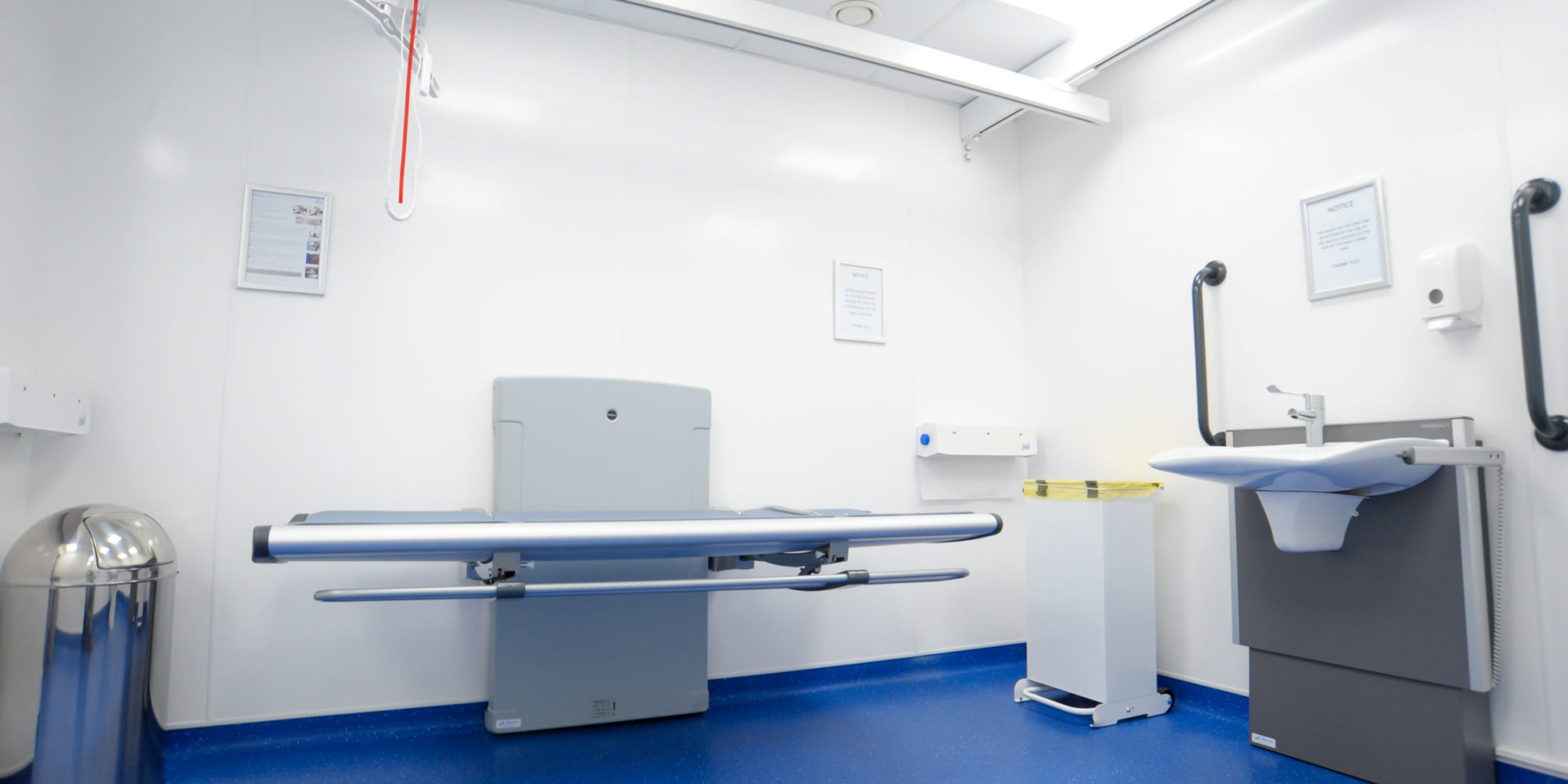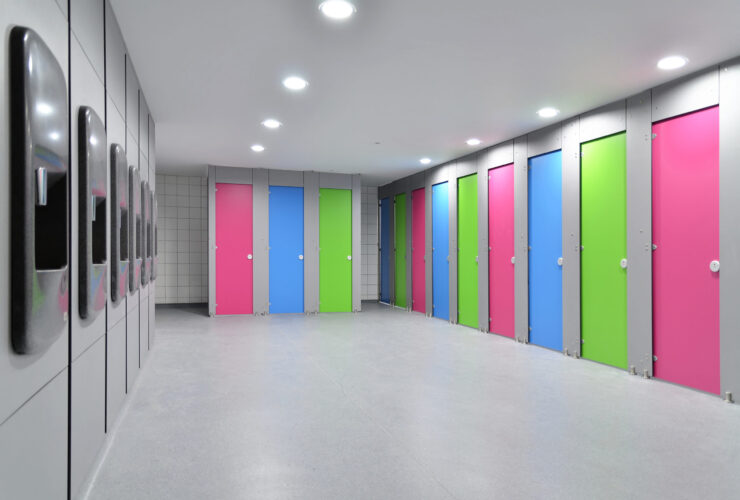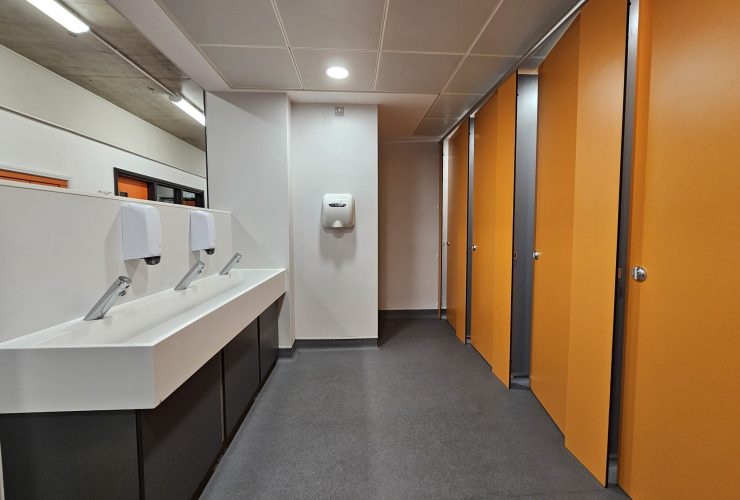Changing Places (CP) refers to both a campaign and a specialised type of toilet facility that provides sanitary accommodation to people with multiple learning or complex disabilities.
It is designed specifically for people who are unable to use an accessible water closet (WC) independently or people whose conditions restrict their ability to move freely. These could be people who have suffered a stroke or with motor neurone disease, cerebral palsy, multiple sclerosis, and severe head or spinal injuries. It can also be used by older people who require assistance when using the toilet.
CP was established in the UK in 2006 by the Changing Places Consortium which is composed of PAMIS, Royal Mencap Society, Centre for Accessible Environments, Dumfries and Galloway Council, Nottingham City Council and the Scottish Government. The consortium supports the continuous efforts to install CP toilets in more public spaces. It also provides information on the location of existing facilities, including a searchable map with address and contact details of the venue as well as details of available equipment and opening times.
Before CP toilets, many disabled people and their carers had to endure risks to their health and safety when using toilets that are not appropriately designed for them. Without a suitable changing bench, they had little to no choice but to use the floor, which is unsafe, unhygienic and undignified. The lack of proper sanitation facilities also discouraged participation in social events and communal activities.
A seemingly simple initiative like CP proved to be truly life-changing for thousands of people with disabilities, as it allowed them to stay out longer without worry and participate more fully in various outdoor activities.
It is important to note that a CP toilet is different than an accessible WC, although both serve the same purpose of adequately providing for the basic sanitation needs of people with disabilities.
An accessible WC is designed so that a disabled person can use it independently. It is configured with grab rails to help with transfer to and from the wheelchair. A carer can also assist but the space is more limited in an accessible WC compared to a CP toilet. An accessible WC is also different from an ambulant toilet, which is for people with a disability who do not require assistance or extra space or those who do not use a wheelchair.
EQUIPMENT REQUIRED
Before a facility can be considered a CP toilet and officially registered on the website, there are certain standards that need to be met.
A CP toilet should be able to accommodate up to three people—a disabled person plus up to two carers or family members. It should be equipped with a height-adjustable adult-sized changing bench, a ceiling track hoist system; centrally placed toilet with ample space on both sides; a privacy screen so the carer can also use the toilet without leaving the disabled person unattended; wide paper roll; large disposal bin; and a washbasin, that is also, ideally, height-adjustable. The floor must also be non-slip.
The recommended dimension is a minimum of 12 square meters with a ceiling height of 2.4 meters. In cases where this is not possible due to limited space available, it is always best to check with a certified CP consultant.
A CP toilet must include the standard features of an accessible WC, such as grab rails and an emergency alarm system.
For the required specialist equipment, the following standards should be met:
- The height-adjustable, adult-sized changing bench should be at least 1800mm long and 800mm wide.
- The track hoist system can be wall- or ceiling-mounted. If this is not possible, a mobile hoist can be used if the room is at least 12 square meters.
- The toilet should be peninsular, with a seat height of 480mm.
- The wide tear-off paper roll should be in a dispenser adjacent to the bench.
- The waste bin should be large enough for disposable pads.
- The washbasin should have knee space.
Showers are not required in CP facilities but should be taken into consideration for certain types of buildings such as leisure spots and transport hubs. For safety purposes, slings should not be provided by the venue or building management.
LEGAL FRAMEWORK
While CP has had significant impact across the UK, and in other parts of the world, much work still needs to be done to ensure that more people are given access to CP toilets with changing benches and hoisting systems.
One of the major hurdles in the continuous development of CP is the legal aspect of the campaign, particularly in terms of obligations to provide such facilities and the possible liabilities in the case of an accident or any untoward incident.
The Disability Discrimination Act 1995 states that providers of public services should not discriminate against disabled people by “refusing to provide, or deliberately not providing, to the disabled person any service which he provides, or is prepared to provide, to members of the public” (s.19). While this would apply to CP facilities, there are provisions that providers can use to argue the need for a CP toilet.
The Changing Places Consortium notes that providers can minimise the risks by conducting a risk assessment to ensure that disabled people are given access to services that most other people just take for granted because it is readily available to them. Organisations can also put in place guidelines that promote safety and responsibility for both users and management.
One of these guidelines is to not make building staff responsible for assisting users of CP toilets. It should be reasonably expected that users are properly assisted by someone who is familiar with the disabled person’s needs. CP facilities should also have an emergency alarm system. In this case, building staff be trained to respond properly should the need arises.
As in any public space, it is important to have user-friendly instructions, including warnings, that are clearly displayed so users, especially first-timers, are empowered to make informed decisions for their own safety.
Installing a CP toilet is vital and beneficial—both for people with disabilities and for providers of publicly used services. It is also a responsibility that the community must share and participate in to promote equal opportunity for disabled people.
***
References:
http://www.changing-places.org/install_a_toilet/design/changing_places_standards.aspx http://www.changing-places.org/portals/0/documents/legal/Changing_Places_legal_factsheet.pdf http://www.changing-places.org/LinkClick.aspx?fileticket=YEDKVYyX8TE%3D&tabid=38



